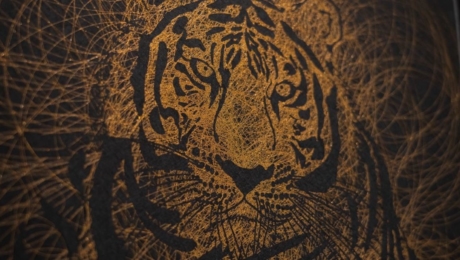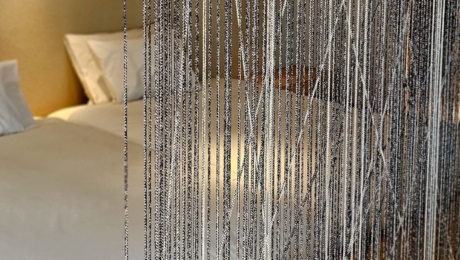

【Edo Tokyo Rethink】Mokume Gane Mokumeganeya: Changing Ancient Skills into Practical Techniques
2022.03.15
LIFEThe metal crafting techniques of Mokume Gane (Wood-textured metal) first emerged in the Edo Period. Starting with sword guards, part of the equipment attached to the sword, these techniques would later be expanded during the end of the Edo Period and subsequent Meiji Period. This expansion would include Japanese smoking pipes, tea utensils, and crafts made for export to overseas.
However, these techniques would slowly begin to vanish after the Meiji Period.
While no clear reason for this vanishing has been determined, the Law of Prohibition of Carrying Swords likely led to a severe fall in demand. Acquiring the knowledge necessary for the techniques involved in metal-carving and hammering is also incredibly difficult, which also caused a decrease in artisans.

Of course, despite this decrease there are still artisans working today. While their numbers were small, the effort to restore and maintain these techniques from the Meiji Period to the Reiwa Period has meant that this tradition continues to be practiced in the modern day.
Mokumeganeya’s President Masaki Takahashi, who founded the company in 1997, is one of these artisans. Becoming enamored with Mokume Gane while studying at Tokyo University of the Arts, Takahashi would first start work creating jewelry using the Mokume Gane techniques. In 2003, he would found the NPO Japan Mokumegane Research Institute in 2003, dedicated to furthering research into Mokume Gane.
With no central archive of materials, Takahashi was faced with a lack of organized resources for the techniques and their history. In this state, he focused on the beauty found in utilitarian objects made by common people, in other words focusing on establishing mokume-gane as a viable product instead of focusing on the restoration of techniques.

“To make something that is desired in today’s world. As part of this process, one must consider things in relation to the existence of ‘traditional techniques,’ without which ‘practical techniques’ are not possible. For this reason, institutes that research and restoration of old techniques, as well as Mokume Gane workshops that produce jewelry are both equally essential. You can consider it as the method and the goal being one and the same.
While Mokumeganeya’s jewelry continues to use techniques that originated in Japan, the focus is not simply on increasing the Japanese factor, but on designs that reflect the relationships of the people who wear them.
While research and production of Mokume Gane continues, Takahashi says the feeling that this technique “has been entrusted to us by our predecessors” has strengthened as a result. The EDO TOKYO RETHINK exhibition will feature a collaboration with contemporary artist Noritaka Tatehana. Through cycles of decay and restoration, the skills carried on from the Edo Period to the Reiwa Period will now be represented as a work of art. There is no doubt that this piece will draw one’s eye with its distinctive Mokume Gane texture.

Photo by Satomi Yamauchi
*All necessary safety precautions were taken during the interview as part of COVID-19 prevention.
Online Exhibition Outline
Exhibition Title: Edo Tokyo Rethink -The Future of Traditional Industries Represented by Art in the Former Iwasaki House Garden-
Exhibition Period: March 24, 2022 (Thu) 14:00 – March 31, 2022 (Thu)
*The exhibition will be available for viewing as an archive at the same URL even after the online exhibition ends.
Organizer: Tokyo Metropolitan Government, Edo-Tokyo Kirari Project
Co-organizer: Tokyo Metropolitan Park Association







